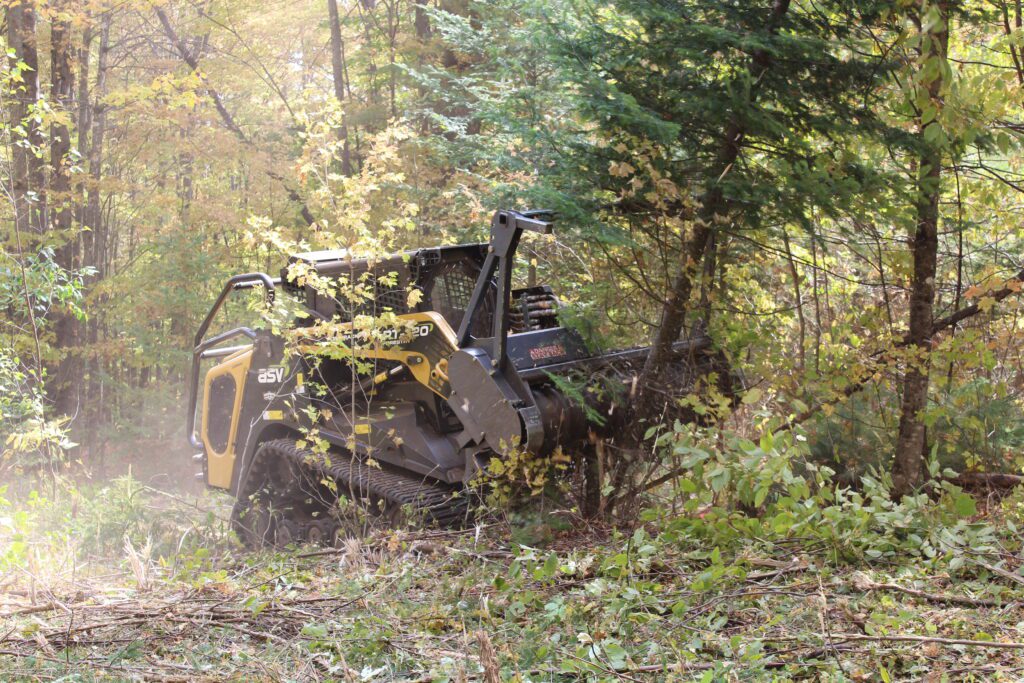In 2020, problems on transmission lines were a major cause of WEC outages. Upstream of the Co-op, faults on the high-voltage lines that bring power to WEC’s substations caused more than half of the hours WEC members were without power.
This past year, members spent a lot less time in the dark. WEC power in 2021 was at its most reliable since 2018. Even though the number of separate outages on WEC lines was up, the number of hours out was down about 10 percent over the average of the previous three years. That’s an indicator of improved transmission service, and also shows that protective devices on the lines and ongoing right-of-way clearing do a lot to shorten the time it takes WEC line crews to restore power.
WEC also saw fewer major storms in 2021, with only two weather events meeting the criteria (one in January, one in May). In both cases, trees from outside WEC’s rights-of-way toppled into the lines, causing damage.
For 25 years, WEC has worked to improve reliability by making the construction of its distribution system more resilient to storms and climate change-related damage. Every three years, WEC goes through the process of developing a Construction Work Plan (CWP) with the approval of the Co-op’s primary lender, the Rural Utilities Service (RUS), a division of the USDA. The current Construction Work Plan runs through 2022.

In 2021, WEC’s forestry head skid steer cleared just over 26 miles of dense brush in the Co-op’s Rights-of-Way. That’s approximately the same distance as a marathon.
Over the last three years, WEC’s Board of Directors approved right-of-way clearing budget increases. These increases are intended to build resilience by proactively clearing ash trees in the path of the destructive emerald ash borer, removing other trees observed to pose a danger to the lines, and clearing the rural ends of the distribution lines. Members at the ends of WEC’s lines, farthest from substations and beyond the protective devices that minimize the number of members who lose power when there’s a fault on the line, experience the most frequent and severe outages. 75 percent of outages occur at the ends of lines; it’s a statistic that hasn’t changed in years.
In 2021, the widespread labor shortage was the major issue affecting WEC’s system. Proactive tree clearing is only possible when there are tree crews available to do the work. And because WEC does not use herbicides on its rights-of-way, all tree clearing is done with hand tools or by WEC’s forestry head skid steer. “During the first half of 2021, WEC was not immune to the shortage of employees and due to tree clearing contractors not having available personnel, WEC only had one tree clearing crew working during that time,” wrote Dave Kresock, WEC’s Director of Operations & Engineering, in his annual report to state regulators.
The good news is that by late summer, WEC was back up to three tree clearing contracts. The last one was able to provide up to eight crews, Kresock said, and is continuing its contract into the 2022 season.
874
separate outages on WEC’s system in 2021
730 / 589
number of separate outages on WEC’s system in 2020 / 2019
84,479
number of WEC consumer hours out in 2021, not including major storms
94,525
The average annual number of consumer hours out over the last three years, not including major storms
2
2021 weather events that met “major storm” criteria: January 16-17, May 25-26
75%
number of outages that take place at the “end of the line.” No change from previous years.
51.6
miles of distribution line that received maintenance clearing in 2021
26
miles of line cleared by WEC’s skid-steer forestry head mulcher
1
Number of tree clearing contractors working for WEC during the first half of 2021
3
Number of tree clearing contractors working for WEC during the last half of 2021
Click here for updates about where tree crews are currently working to clear rights-of-way.
